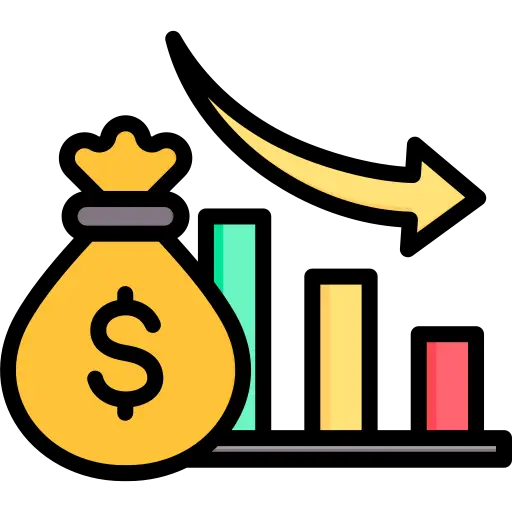Verified Insights
Precision-driven research you can trust. We uphold rigorous data validation processes to ensure every report is reliable and based on credible sources.
+91 9425150513 (Asia) support@24lifesciences.com
MARKET INSIGHTS
The global coagulation filter market size was valued at USD 433 million in 2024. The market is projected to grow from USD 449 million in 2025 to USD 537 million by 2031, exhibiting a CAGR of 3.2% during the forecast period.
Coagulation filters are medical devices designed to remove blood clots, fibrin, and other particulate matter from blood components during medical procedures. These filters play a critical role in transfusion medicine, cardiac surgeries, and dialysis treatments by improving patient safety and treatment efficacy. The product landscape includes both disposable and reusable variants, with applications spanning hospitals and clinics.
Market growth is primarily driven by increasing surgical volumes globally, particularly cardiovascular procedures which grew 12% annually since 2020. While the aging population and rising chronic disease prevalence create sustained demand, cost constraints in emerging markets present adoption challenges. Technological advancements in filter design and material science are enabling manufacturers to develop more efficient products. Key players like Asahi Kasei Medical and Fresenius are expanding their portfolios through strategic acquisitions, with the top five companies holding 58% market share in 2024.
Rising Prevalence of Chronic Diseases to Fuel Coagulation Filter Demand
The global increase in chronic diseases such as cardiovascular disorders, cancer, and diabetes is significantly driving the coagulation filter market. Patients with these conditions often require blood transfusions or surgical interventions where coagulation management is critical. With over 17 million cardiovascular-related deaths annually worldwide, the need for effective blood filtration solutions during medical procedures continues to rise. Coagulation filters play a vital role in preventing complications by removing microaggregates and activated clotting factors from transfused blood.
Advancements in Blood Transfusion Technology Accelerating Market Growth
Recent technological advancements in blood transfusion equipment are creating substantial growth opportunities for coagulation filters. Modern filters now incorporate innovative materials like polyester mesh and advanced polymer coatings that improve filtration efficiency while reducing adverse reactions. The development of leukoreduction-compatible coagulation filters has been particularly impactful, as these products address the growing demand for safer transfusion practices in hematology and oncology treatments.
➤ For instance, recent clinical studies show that advanced coagulation filters can reduce postoperative complications by up to 40% compared to conventional blood administration sets.
Furthermore, the integration of coagulation filters with automated blood processing systems is gaining traction in hospital settings. This convergence of technologies enhances workflow efficiency while maintaining high standards of patient safety, making these products increasingly indispensable in modern healthcare facilities.
Growing Surgical Volumes Worldwide Supporting Market Expansion
The steady increase in surgical procedures globally serves as another key driver for coagulation filter adoption. With surgical volumes projected to grow at approximately 5% annually, particularly in cardiovascular and orthopedic specialties, the demand for perioperative blood management solutions remains strong. Coagulation filters have become standard components in many surgical blood transfusion protocols, as they help mitigate risks associated with massive transfusions during complex operations.
High Product Costs and Budget Constraints Limiting Market Penetration
While the benefits of coagulation filters are well-documented, their relatively high cost compared to standard blood administration sets presents a significant market restraint. Premium coagulation filters can cost 3-5 times more than basic transfusion sets, creating adoption challenges in price-sensitive healthcare markets. This price differential is particularly impactful in developing regions where healthcare budgets are constrained and cost containment remains a priority.
In many public healthcare systems, procurement decisions prioritize basic medical supplies over specialized products like coagulation filters, unless mandated by strict clinical protocols. This economic reality slows market growth, especially in outpatient and non-surgical transfusion settings where the perceived clinical need may be lower.
Limited Clinical Evidence in Certain Patient Populations
The coagulation filter market faces additional challenges due to gaps in clinical evidence for specific patient groups. While these devices have proven efficacy in surgical and trauma settings, some clinicians remain cautious about their universal application. Questions persist about cost-effectiveness in routine transfusions and their impact on certain blood components, creating hesitation among healthcare providers.
Furthermore, the lack of standardized protocols for coagulation filter use across different medical specialties contributes to inconsistent adoption patterns. Without clear, evidence-based guidelines supporting their use in all transfusion scenarios, many institutions limit their deployment to high-risk cases only.
Emerging Markets Present Significant Growth Potential
Developing economies represent a substantial growth opportunity for coagulation filter manufacturers. As healthcare infrastructure improves in these regions and surgical volumes increase, demand for advanced blood management products rises accordingly. Countries with expanding middle-class populations and improving healthcare access are particularly promising, with market growth rates in these areas exceeding 7% annually.
The gradual shift toward more sophisticated medical technologies in emerging markets, combined with increasing awareness of transfusion safety, creates favorable conditions for market expansion. Manufacturers focusing on cost-optimized products tailored to these regions can capitalize on this untapped potential.
Development of Next-Generation Filters with Enhanced Capabilities
Innovation in filter technology presents another major opportunity for market growth. Research into filters that combine coagulation management with additional functionalities, such as pathogen reduction or cytokine removal, could revolutionize blood transfusion practices. These multi-functional products would address several clinical concerns simultaneously, potentially commanding premium pricing and gaining rapid adoption in advanced healthcare systems.
Furthermore, the integration of smart technologies, such as sensors to monitor filter performance in real-time, could create new product categories within this market segment. Such innovations would align with the broader trend toward connected medical devices and data-driven healthcare.
Stringent Regulatory Requirements for Medical Devices
The coagulation filter market faces significant challenges from increasingly stringent regulatory environments worldwide. Medical device approvals now require more extensive clinical data and longer review periods, particularly for products that interface with blood components. These regulatory hurdles can delay product launches by 12-18 months and substantially increase development costs.
Manufacturers must navigate varying regulatory frameworks across different regions, with some markets requiring country-specific clinical trials and certifications. This complexity creates barriers to global market entry and limits the ability to quickly scale production for international distribution.
Supply Chain Vulnerabilities for Specialty Materials
The production of high-performance coagulation filters depends on specialized materials that are vulnerable to supply chain disruptions. Recent global events have exposed weaknesses in the availability of critical polymer components and filtration media. These supply constraints can lead to production delays and force manufacturers to maintain higher inventory levels, increasing operational costs.
Additionally, the specialized nature of these materials limits alternative sourcing options, creating potential bottlenecks when demand surges unexpectedly. Manufacturers must develop more resilient supply chains to mitigate these risks and ensure consistent product availability.
The global Coagulation Filter market was valued at US$ 433 million in 2024 and is projected to reach US$ 537 million by 2031, growing at a compound annual growth rate (CAGR) of 3.2% during the forecast period. This growth is supported by the broader medical devices sector, which was estimated at US$ 603 billion in 2023 and is expected to expand at a CAGR of 5% over the next six years. Rising global healthcare spending, accounting for approximately 10% of global GDP, is driven by the increasing needs of an aging population, the prevalence of chronic and infectious diseases, and expansion in emerging markets. Coagulation filters play a critical role in blood processing and transfusion medicine, aiding in the removal of clots and impurities to ensure safe blood component separation. The market is influenced by advancements in medical technology, heightened demand for advanced healthcare services, growing awareness of early disease diagnosis, and increasing surgical procedures worldwide. Key drivers include the rising incidence of blood-related disorders and the need for efficient hemotherapy solutions, while challenges encompass regulatory hurdles and supply chain disruptions.
Disposable Segment Dominates the Market Due to Emphasis on Infection Control and Operational Efficiency
The market is segmented based on type into:
Disposable
Reusable
Disposable coagulation filters hold a significant share owing to their single-use nature, which minimizes the risk of cross-contamination in clinical settings. This segment benefits from stringent hygiene standards in healthcare facilities and the convenience of immediate replacement post-procedure. Reusable filters, while cost-effective over time, require thorough sterilization processes, which can limit their adoption in high-volume environments. The shift toward disposables aligns with global trends in patient safety and regulatory compliance, particularly in regions with advanced healthcare infrastructure.
Hospital Segment Leads Due to High Demand in Surgical and Transfusion Therapies
The market is segmented based on application into:
Hospitals
Clinics
Hospitals represent the primary application area, driven by the extensive use of coagulation filters in blood banks, operating rooms, and intensive care units for procedures like apheresis and plasma separation. The segment's dominance is fueled by the large scale of operations and the integration of these devices in automated blood processing systems. Clinics, though growing, focus on outpatient care and smaller-scale transfusions, offering opportunities for compact, efficient filter solutions. Overall, applications in these areas underscore the market's role in enhancing transfusion safety and efficacy.
Leading companies in the Coagulation Filter market include:
Asahi Kasei Medical
Haemonetics
Fresenius
Macopharma
Shandong Zhongbaokang
Nanjing Shuangwei
Chengdu Shuanglu
Braile Biomedica
Nanjing Cellgene
These players are actively involved in product innovation, such as developing advanced filtration technologies for improved clot removal and compatibility with cell salvage systems. Recent developments include expansions in manufacturing capabilities and strategic partnerships to address rising demand in emerging markets.
Companies Focus on Innovation and Strategic Expansions to Maintain Market Leadership
The competitive landscape of the coagulation filter market is moderately fragmented, featuring a mix of large multinational corporations, mid-sized specialists, and emerging regional players. This structure fosters innovation while intensifying rivalry, particularly in areas like product efficacy and regulatory compliance. Asahi Kasei Medical stands out as a dominant force, leveraging its extensive expertise in medical filtration technologies and a robust distribution network spanning North America, Europe, and Asia-Pacific. The company's commitment to high-quality, biocompatible filters has solidified its position, enabling it to capture a substantial portion of the market for disposable and reusable coagulation devices used in blood processing.
Haemonetics Corporation and Fresenius Medical Care also command significant market shares as of 2024, driven by their integrated solutions for coagulation management in surgical and dialysis settings. Their growth stems from a strong emphasis on research-driven advancements, such as improved filter designs that enhance clotting factor removal while minimizing blood loss. Because these firms have deep roots in the broader medical devices sector which reached an estimated US$603 billion in 2023 and is poised for a 5% CAGR through 2029 they benefit from synergies in manufacturing and supply chains, allowing them to respond swiftly to rising demands from hospitals and clinics worldwide.
Furthermore, ongoing growth initiatives, including mergers, acquisitions, and geographic expansions into emerging markets like China and India, are set to bolster their positions significantly by 2031. For instance, as global healthcare spending, which accounts for about 10% of GDP, continues to climb due to aging populations and chronic disease prevalence, these companies are investing heavily in scalable production to meet projected demand. The overall coagulation filter market, valued at US$433 million in 2024, is expected to grow to US$537 million by 2031 at a CAGR of 3.2%, underscoring the opportunities for expansion amid challenges like stringent regulations and supply chain disruptions.
Meanwhile, players such as Macopharma and Shandong Zhongbaokang Medical Implements are actively fortifying their footholds through substantial R&D investments, collaborative partnerships with healthcare providers, and launches of next-generation filters tailored for reusable applications. However, smaller entities like Nanjing Shuangwei and Chengdu Shuanglu face hurdles in scaling operations globally, yet they contribute to competition by offering cost-effective alternatives in Asian markets. This dynamic environment encourages all participants to prioritize innovation, such as advanced materials that reduce thrombosis risks, ensuring sustained growth while navigating obstacles like pricing pressures and raw material volatility. Overall, the interplay of these strategies highlights a market where adaptability and technological edge are paramount for long-term success.
Asahi Kasei Medical (Japan)
Haemonetics Corporation (U.S.)
Fresenius Medical Care (Germany)
Macopharma (France)
Shandong Zhongbaokang Medical Implements Co., Ltd. (China)
Nanjing Shuangwei Biotechnology Co., Ltd. (China)
Chengdu Shuanglu Pharmaceutical (China)
Braile Biomedica (Brazil)
Nanjing Cellgene Biomedicine Co., Ltd. (China)
The coagulation filter market is experiencing significant growth driven by advancements in hemodialysis and blood processing technologies, which are essential for managing coagulation during treatments for chronic kidney disease and other blood-related disorders. These filters play a crucial role in preventing excessive clotting while ensuring efficient blood purification, and recent innovations in membrane technology have enhanced their biocompatibility and filtration efficiency. For instance, the development of high-flux filters with improved pore sizes allows for better removal of uremic toxins without compromising blood flow, addressing longstanding challenges in patient safety and treatment efficacy. Furthermore, the integration of antimicrobial coatings on filter surfaces has reduced infection risks, a major concern in prolonged dialysis sessions. The global coagulation filter market was valued at 433 million in 2024 and is projected to reach 537 million by 2031, reflecting a compound annual growth rate of 3.2%. This steady expansion underscores the market's responsiveness to evolving clinical needs, where precision in coagulation management directly impacts patient outcomes. While the broader medical devices sector, estimated at 603 billion in 2023 with an anticipated CAGR of 5% over the next six years, provides a supportive ecosystem, coagulation filters stand out due to their specialized application in critical care settings. However, manufacturers must navigate regulatory hurdles to bring these innovations to market swiftly, as delays can hinder adoption in fast-paced healthcare environments.
Shift Towards Disposable Filters
The preference for disposable coagulation filters is gaining momentum, primarily due to heightened emphasis on infection control and operational efficiency in healthcare facilities. Unlike reusable variants, disposables eliminate the need for sterilization processes, thereby minimizing cross-contamination risks and reducing turnaround times between treatments. This trend aligns with global healthcare initiatives aimed at curbing hospital-acquired infections, which affect millions annually. In 2024, disposable filters accounted for a substantial segment of the market, driven by their cost-effectiveness in high-volume settings like hospitals, where the disposable type holds a dominant share. Moreover, advancements in material science have made these filters lighter and more user-friendly, further encouraging their uptake. As healthcare providers prioritize patient safety amid rising chronic disease prevalence, the demand for disposables is expected to outpace reusables, fostering innovation in eco-friendly designs to address sustainability concerns.
Growth in Personalized Coagulation Management
Personalized medicine approaches are reshaping the coagulation filter landscape by enabling tailored solutions based on individual patient profiles, such as genetic predispositions to clotting disorders or specific dialysis requirements. This customization enhances treatment precision, reducing complications like thrombosis in vulnerable populations, including the elderly. With global healthcare spending constituting about 10% of GDP and steadily increasing due to aging demographics and chronic conditions, investments in such targeted technologies are surging. Techniques involving real-time monitoring integrated with filters allow for dynamic adjustments during procedures, improving overall therapeutic results. This trend not only drives market expansion but also opens avenues for collaborative R&D between device makers and clinicians to refine applications in both hospital and clinic environments.
The rapid development of healthcare infrastructure, particularly in emerging regions like Asia and Latin America, is propelling the adoption of coagulation filters across diverse applications. Increased access to dialysis centers and specialized clinics is addressing the unmet needs of growing patient populations afflicted by kidney diseases and cardiovascular issues. In these areas, government initiatives and private investments are bolstering medical device procurement, with North America and Europe maintaining leadership but Asia-Pacific emerging as a high-growth hub due to its large demographic base. Key drivers include the rising incidence of lifestyle-related disorders, which necessitates robust coagulation management tools, and the shift towards outpatient care that favors portable and efficient filters. Manufacturers such as Asahi Kasei Medical and Haemonetics are responding with localized production strategies and partnerships to navigate supply chain dynamics. Challenges like varying regulatory standards persist, yet the overall trajectory points to sustained demand, supported by a projected market CAGR of 3.2% through 2031. This expansion not only diversifies revenue streams for industry players but also enhances global healthcare equity, as affordable filter technologies become integral to routine blood management protocols.
North America
North America stands as a pivotal region in the global Coagulation Filter market, driven by advanced healthcare infrastructure and a strong emphasis on innovative medical devices. The United States, Canada, and Mexico collectively represent a significant portion of the market, with the U.S. leading due to its robust hospital networks and high adoption rates of disposable coagulation filters in surgical and therapeutic procedures. This region's market is bolstered by increasing healthcare expenditures, which align with the global trend where healthcare spending accounts for about 10% of GDP. Aging populations and the rising prevalence of chronic conditions, such as cardiovascular diseases, necessitate efficient coagulation management during treatments like apheresis and plasma exchange, where these filters play a crucial role in removing clots and ensuring blood purity.
Furthermore, regulatory bodies like the FDA enforce stringent standards for medical devices, promoting the use of high-quality, disposable filters to minimize infection risks in hospitals and clinics. Recent developments in minimally invasive surgeries have amplified demand, as coagulation filters integrate seamlessly into these procedures, enhancing patient safety and recovery times. Key players such as Haemonetics and Fresenius maintain a strong presence here, investing in R&D to develop reusable options that comply with sustainability goals without compromising efficacy. However, challenges like high costs of advanced filters can limit accessibility in smaller clinics, though bulk procurement by large hospital chains mitigates this.
The market's growth is also fueled by ongoing clinical trials and collaborations between manufacturers and research institutions, focusing on improving filter materials for better biocompatibility. For instance, advancements in polymer technologies have led to filters that reduce clotting incidents during long-duration therapies. While the disposable segment dominates due to convenience and hygiene, reusable filters are gaining traction in cost-conscious environments like ambulatory clinics. Overall, North America's market dynamics reflect a balance between innovation and regulatory compliance, positioning it for steady expansion aligned with the global projection of reaching US$ 537 million by 2031 at a 3.2% CAGR. Economic stability and insurance coverage further support widespread adoption, ensuring that healthcare providers prioritize devices that streamline coagulation processes in critical care settings. As telemedicine and remote monitoring evolve, integration of coagulation filters into portable systems could unlock new opportunities, though supply chain disruptions from past global events remain a cautious note for manufacturers.
Europe
Europe's Coagulation Filter market is characterized by a mature healthcare ecosystem, stringent regulations, and a focus on patient-centric innovations, making it a key contributor to the global landscape. Countries like Germany, France, the U.K., and Italy drive demand through extensive use in hospitals for procedures involving blood filtration during dialysis and transfusion therapies. The European Medicines Agency's oversight ensures that products meet high safety thresholds, favoring disposable filters that prevent cross-contamination in high-volume clinical settings. With the global medical devices market valued at US$ 603 billion in 2023 and growing at 5% CAGR, Europe's share benefits from rising chronic disease burdens, including thrombosis and hemophilia, which require reliable coagulation management tools.
Innovation hubs in the Nordic Countries and Benelux regions are pushing boundaries with eco-friendly filter designs, addressing environmental concerns alongside medical efficacy. Reusable filters are particularly popular in resource-optimized clinics, supported by EU directives on waste reduction, while disposables prevail in surgical environments for their sterility. Leading firms like Asahi Kasei Medical and Macopharma leverage local manufacturing to supply tailored solutions, responding to diverse national health policies. However, post-Brexit trade adjustments have introduced minor hurdles for U.K.-based operations, though intra-EU collaborations continue to foster growth.
The region's aging demographic, projected to intensify healthcare needs, underscores the market's potential, with clinics increasingly adopting these filters for outpatient coagulation therapies to reduce hospital stays. Challenges include varying reimbursement structures across countries, which can slow adoption in Eastern Europe, but overall, Europe's emphasis on evidence-based medicine drives qualitative improvements. Recent mergers among suppliers aim to consolidate supply chains, enhancing availability amid fluctuating raw material prices. As personalized medicine advances, coagulation filters are evolving to integrate with diagnostic tools, offering real-time monitoring capabilities. This forward-looking approach, combined with public health initiatives targeting cardiovascular health, positions Europe for sustained market expansion, mirroring the global trend toward enhanced device integration in comprehensive care protocols. While economic pressures from energy costs pose risks, the sector's resilience through diversified sourcing ensures continued progress.
Asia-Pacific
Asia-Pacific emerges as the fastest-growing region in the Coagulation Filter market, propelled by rapid urbanization, expanding healthcare access, and a burgeoning population facing rising incidences of lifestyle-related coagulation disorders. China, Japan, India, and South Korea account for the lion's share, with China's massive hospital infrastructure and government-backed medical reforms accelerating demand for both disposable and reusable filters in blood processing applications. The region's clinics, particularly in Southeast Asia, are shifting toward advanced devices to handle growing patient volumes from infectious diseases and chronic conditions, aligning with global healthcare spending trends that occupy 10% of GDP.
Cost sensitivity remains a factor, leading to prevalent use of reusable filters in rural and mid-tier facilities, while urban hospitals favor disposables for efficiency in high-stakes procedures like organ transplants. Key manufacturers such as Shandong Zhongbaokang and Nanjing Shuangwei capitalize on local production to meet this dual demand, supported by initiatives like India's Make in India campaign that boosts domestic supply chains. However, regulatory harmonization varies, with Japan's PMDA imposing rigorous testing that influences product standards across the region.
Technological adoption is accelerating, with AI-enhanced filters for precise coagulation control gaining interest in research-intensive markets like South Korea. Challenges include counterfeit products in less-regulated areas, which undermine trust, but international partnerships are addressing this through quality certification programs. The post-pandemic emphasis on resilient healthcare systems has spurred investments, with projections indicating robust growth tied to the 3.2% global CAGR. Furthermore, rising medical tourism in Thailand and Singapore integrates these filters into specialized coagulation therapies, attracting global patients. As emerging markets like India expand clinic networks, opportunities for affordable innovations abound, though infrastructure gaps in remote areas persist. Overall, Asia-Pacific's dynamic interplay of economic development and health priorities fosters a vibrant market, where traditional and modern approaches converge to meet diverse needs effectively.
South America
South America's Coagulation Filter market is in a developmental phase, influenced by improving healthcare systems and increasing awareness of coagulation-related treatments amid rising non-communicable diseases. Brazil and Argentina lead the way, with Brazil's expanded public health program (SUS) facilitating greater access to medical devices in hospitals, where disposable filters are essential for safe blood management during surgeries and dialysis. Clinics in urban centers are adopting these tools to address the growing burden of diabetes and heart conditions, reflecting broader global drivers like the aging population and chronic disease prevalence.
Economic fluctuations pose significant challenges, often leading to reliance on imported filters from Europe and North America, which inflates costs and delays supply. Local players like Braile Biomedica are stepping up with cost-effective reusable options tailored for resource-limited settings, helping to bridge affordability gaps. Regulatory frameworks, while progressing under ANVISA in Brazil, still lag in uniformity, affecting market entry for innovative products. However, international aid and trade agreements are enhancing availability, particularly for clinics serving underserved populations.
Recent infrastructure investments in rail and urban transport indirectly support healthcare logistics, ensuring timely device distribution. The disposable segment grows in private hospitals catering to affluent patients, while reusables dominate public sectors for sustainability. Opportunities arise from telemedicine expansions, integrating coagulation monitoring to optimize filter use in remote areas. Despite volatility, the market's potential is evident in pilot programs testing advanced filters for trauma care. As healthcare spending rises, albeit from a lower base than global averages, South America is poised for gradual but meaningful growth, focusing on equitable access and local innovation to overcome persistent barriers like funding constraints and supply chain vulnerabilities.
Middle East & Africa
The Middle East and Africa region presents an emerging landscape for the Coagulation Filter market, shaped by varying levels of healthcare investment and a push toward modernizing medical practices. Saudi Arabia, UAE, and Turkey are frontrunners, with Vision 2030 initiatives in Saudi Arabia funding advanced hospital equipment, including coagulation filters for managing hereditary blood disorders prevalent in the area. Clinics across the region benefit from oil-driven economies in the Gulf, enabling adoption of disposable filters to ensure hygiene in transfusion and apheresis procedures, in line with global medical devices growth at 5% CAGR.
In Africa, countries like South Africa and Egypt show promise through expanding private clinics, though overall penetration is limited by infrastructure deficits and economic disparities. Reusable filters find favor in cost-sensitive environments, supported by players like Fresenius adapting products for diverse needs. Regulatory challenges, such as fragmented standards, hinder progress, but WHO collaborations are standardizing approvals to facilitate imports. The rising demand for durable devices stems from increasing urbanization and conflict-related trauma care, where effective coagulation is vital.
Technological transfers from Asia and Europe are accelerating R&D, with focus on heat-resistant filters for hot climates. Funding limitations slow widespread adoption, yet long-term potential is strong, driven by demographic shifts and health awareness campaigns targeting thrombosis. Key opportunities lie in public-private partnerships, enhancing supply to rural clinics and reducing reliance on donations. While weak enforcement of quality controls poses risks, regional hubs like Dubai are emerging as distribution centers, fostering market integration. This evolving dynamic, coupled with global trends in chronic disease management, signals a trajectory toward sustained development, balancing immediate challenges with strategic advancements for inclusive healthcare delivery.
This market research report offers a holistic overview of global and regional markets for the forecast period 2025–2032. It presents accurate and actionable insights based on a blend of primary and secondary research.
✅ Market Overview
The global Coagulation Filter market was valued at USD 433 million in 2024 and is projected to reach USD 537 million by 2031, growing at a compound annual growth rate (CAGR) of 3.2% during the forecast period. This growth is supported by the broader medical devices sector, which was estimated at USD 603 billion in 2023 and is expected to expand at a CAGR of 5% over the next six years. Historical data from 2020-2024 indicates steady revenue growth, with sales volumes reaching significant levels in thousands of units, driven by increasing healthcare demands worldwide.
Key growth trends include rising adoption in blood processing and transfusion procedures, with value projections showing consistent increases through 2031. Volume projections in thousands of units align with revenue forecasts, reflecting enhanced efficiency in coagulation management. The market's expansion is tied to global healthcare spending, which accounts for approximately 10% of global GDP, fueled by aging populations and chronic disease prevalence.
✅ Segmentation Analysis
By product type, the market is divided into disposable and reusable coagulation filters. Disposable filters dominate due to hygiene concerns and ease of use in high-volume settings, while reusable options appeal to cost-conscious facilities with proper sterilization capabilities.
By application, hospitals represent the primary usage area, accounting for the majority of demand in surgical and emergency blood management. Clinics follow as a growing segment, particularly in outpatient procedures requiring efficient coagulation control.
End-user industries primarily include healthcare providers focused on hematology and transfusion medicine, with hospitals and clinics as core adopters.
Distribution channels involve direct sales to healthcare institutions and through medical supply distributors, ensuring wide accessibility in both developed and emerging markets.
✅ Regional Insights
North America leads with advanced healthcare infrastructure, followed by Europe with stringent regulatory standards. Asia-Pacific is experiencing rapid growth due to expanding medical facilities, while Latin America, Middle East, and Africa show potential in underserved areas.
Country-level data highlights the United States as a key market in North America, with Canada and Mexico contributing steadily. In Europe, Germany and France drive adoption, alongside the U.K. and Italy. Asia features China and Japan as leaders, with India and South Korea gaining traction. Brazil dominates South America, and in the Middle East & Africa, Saudi Arabia and UAE are notable.
✅ Competitive Landscape
Major players include Asahi Kasei Medical, Haemonetics, Fresenius, Macopharma, Shandong Zhongbaokang, Nanjing Shuangwei, Chengdu Shuanglu, Braile Biomedica, and Nanjing Cellgene. These companies hold significant market shares, with the top five accounting for a substantial portion of global revenues in 2024.
Strategies encompass mergers and acquisitions for portfolio expansion, partnerships with healthcare providers, and geographic expansions into emerging markets to capture growth opportunities.
Product portfolios feature advanced filtration technologies tailored for coagulation efficiency, with pricing strategies balancing innovation costs and affordability to penetrate diverse market segments.
✅ Technology & Innovation
Emerging technologies focus on improved filtration materials for better clotting detection, with R&D trends emphasizing biocompatibility and precision in blood processing.
Automation and digitalization enhance filter integration with diagnostic systems, while sustainability initiatives promote eco-friendly materials to reduce medical waste.
AI and IoT enable real-time monitoring of coagulation processes, disrupting traditional methods by improving accuracy and reducing errors in clinical settings.
✅ Market Dynamics
Key drivers include the growing geriatric population, rising chronic diseases, and advancements in medical technology, alongside increasing healthcare expenditures globally.
Restraints involve regulatory hurdles and high development costs, with risks from supply shortages of raw materials and competition from alternative technologies.
Supply chain trends show reliance on specialized manufacturers, with challenges from geopolitical tensions affecting component sourcing and distribution logistics.
✅ Opportunities & Recommendations
High-growth segments include disposable filters in hospitals and emerging Asian markets, where demand for efficient blood management is surging.
Investment hotspots are in Asia-Pacific and Latin America, leveraging infrastructure expansions and rising healthcare access.
Stakeholders should prioritize R&D in sustainable technologies, form strategic alliances for market entry, and focus on compliance to capitalize on global opportunities.
✅ Stakeholder Insights
This report is designed to support strategic decision-making for a wide range of stakeholders, including:
Pharmaceutical and biotech companies
Medical device and diagnostics manufacturers
Healthcare providers and hospital systems
Contract research and manufacturing organizations
Investors, consultants, and policy makers
-> The global coagulation filter market was valued at USD 433 million in 2024 and is expected to reach USD 537 million by 2031.
Which key companies operate in Global Coagulation Filter Market?
-> Key players include Asahi Kasei Medical, Haemonetics, Fresenius, Macopharma, Shandong Zhongbaokang, Nanjing Shuangwei, Chengdu Shuanglu, Braile Biomedica, and Nanjing Cellgene, among others.
-> Key growth drivers include advancements in medical technology, growing geriatric population, rising healthcare expenditure, and increasing prevalence of chronic diseases.
-> North America dominates the market, while Asia-Pacific is the fastest-growing region.
-> Emerging trends include disposable filtration technologies, integration of AI in diagnostics, and sustainable medical device innovations.
Our Clients
“The data provided by 24LifeScience was clear, well-organized, and useful for internal strategy planning. It helped us understand the competitive landscape more effectively.”
“We used one of their market overview reports for early-stage feasibility work. It gave us a helpful snapshot of current trends and key players in our therapeutic area.”
“I appreciated the team’s responsiveness and willingness to adjust the scope based on our feedback. The final report was aligned with our expectations and timelines.”
“Their custom report on clinical trial trends was a helpful reference as we explored new indications."
“As someone working on early product planning, I found their therapeutic area briefs quite useful. The information was presented in a way that made it easy to extract key takeaways.”
“We didn’t need anything overly complex—just solid, dependable data. 24LifeScience delivered exactly that, without unnecessary fluff.”
“Their reports gave us a good foundation to start our own market assessment. While we supplemented it with other data, this was a great starting point.”
“I’ve used a few of their reports for academic and grant writing purposes. They’re generally well-cited and reliable for understanding market scope.”
At 24LifeScience, we combine domain expertise with dependable research delivery. What truly differentiates us isn't just what we do — it's how we do it. Our clients trust us because we offer consistency, security, value, and most importantly, insight that drives action.

Precision-driven research you can trust. We uphold rigorous data validation processes to ensure every report is reliable and based on credible sources.

We uphold rigorous data validation processes to ensure every report is reliable, up-to-date, and based on credible sources.

24LifeScience powers research for top firms in 20+ nations.Chosen by leading life sciences companies worldwide.

We offer competitive pricing models that align with your project scope — no hidden charges, no lock-in. Tailored pricing for every scale and need.

8–10+ years of life sciences expertise turned into strategic insights.We don’t just summarize data we contextualize it.

Whether it's a ready-made report or a custom project, we deliver within the promised timeline With real-time updates